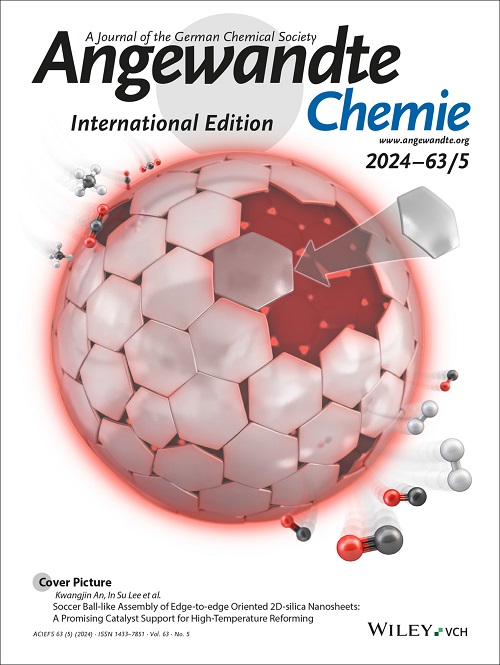Competitive Coordination Induced Crystallization Regulation for Efficient and Stable Sn-Pb Perovskite Solar Cells
IF 16.1
1区 化学
Q1 CHEMISTRY, MULTIDISCIPLINARY
引用次数: 0
Abstract
The faster crystallization rate of Sn perovskite compared with Pb perovskite leads to the spatial component inhomogeneity and inferior quality of the Sn-Pb perovskite films, which increases the quasi-Fermi level splitting (QFLS) deficit and accelerates the oxidative degradation of the films, thus undercutting the efficiency and stability of Sn-Pb perovskite solar cells. Herein, we propose a thermodynamic selective strategy to mediate the crystallization rate between the Sn- and Pb-based perovskite by introducing methyl 5-aminolevulinate hydrochloride (5-AH) in perovskite precursor solution. The SnI2 competes with PbI2 in coordinating with 5-AH to form the thermodynamically favored SnI2-5-AH adducts with stronger SnI2-Cl− according to molecular orbital interactions, thereby delaying the crystallization of Sn-based perovskite. Such crystallization regulation improves the composition uniformity and the crystallization quality, which effectively suppresses non-radiative recombination and reduces the QFLS deficit. Additionally, the strong interaction between Sn2+ and 5-AH as well as reductive grain boundaries inhibits the oxidation of Sn2+. Therefore, the optimal devices with 5-AH exhibit an improved PCE of 23.76% with a high voltage of 0.885 V and long-term stability, maintaining 89% of initial efficiency under continuous irradiation for 1100 h at the maximum power point under AM 1.5G.求助全文
约1分钟内获得全文
求助全文
来源期刊
CiteScore
26.60
自引率
6.60%
发文量
3549
审稿时长
1.5 months
期刊介绍:
Angewandte Chemie, a journal of the German Chemical Society (GDCh), maintains a leading position among scholarly journals in general chemistry with an impressive Impact Factor of 16.6 (2022 Journal Citation Reports, Clarivate, 2023). Published weekly in a reader-friendly format, it features new articles almost every day. Established in 1887, Angewandte Chemie is a prominent chemistry journal, offering a dynamic blend of Review-type articles, Highlights, Communications, and Research Articles on a weekly basis, making it unique in the field.

 求助内容:
求助内容: 应助结果提醒方式:
应助结果提醒方式:


